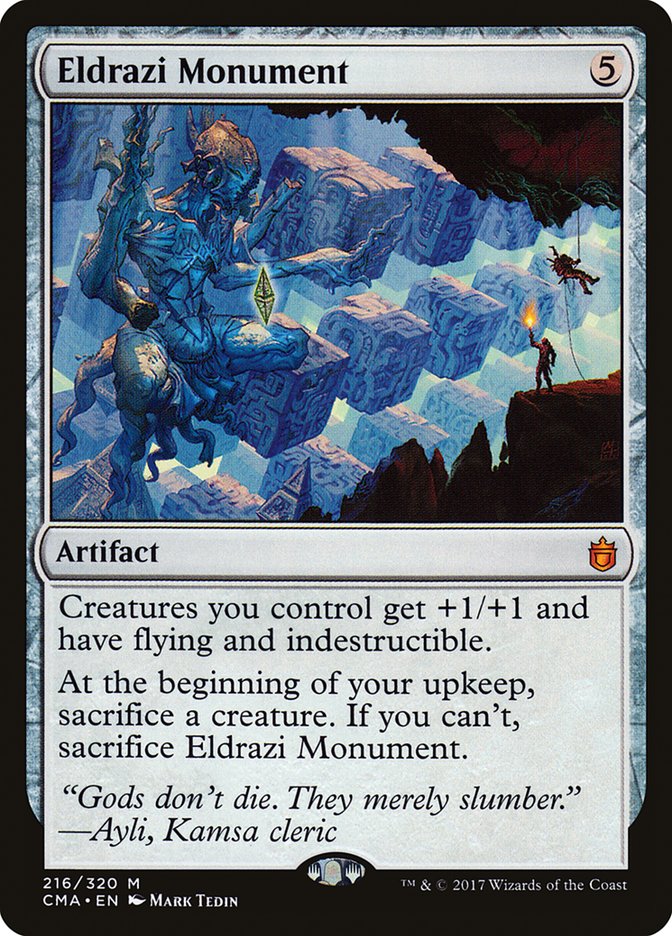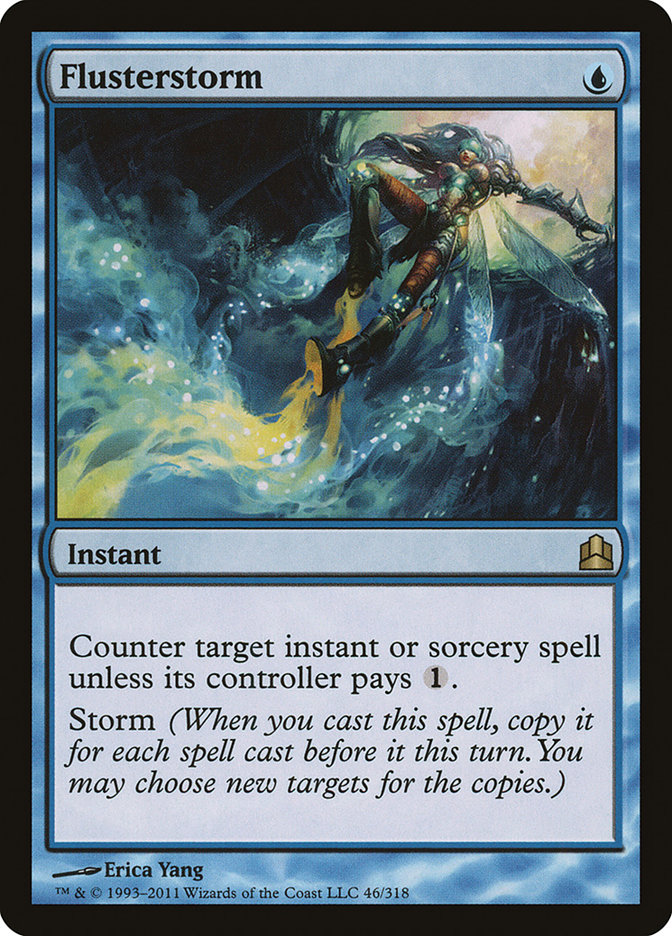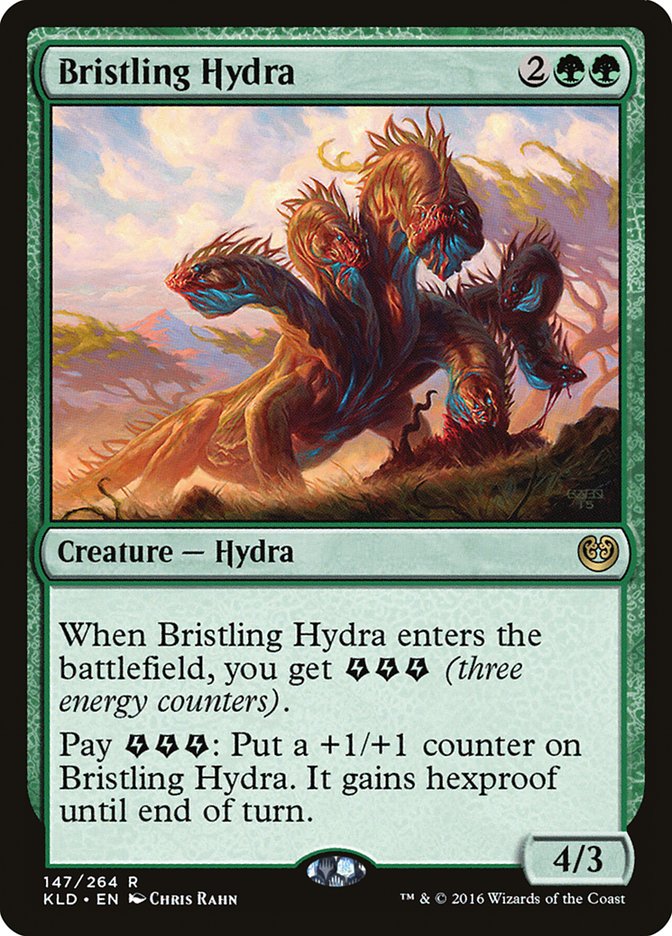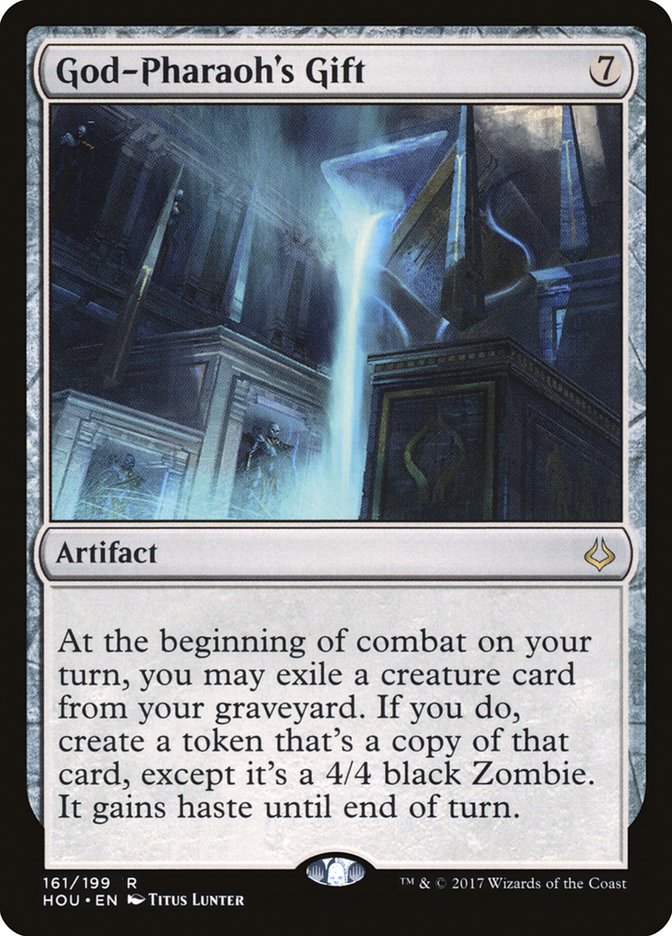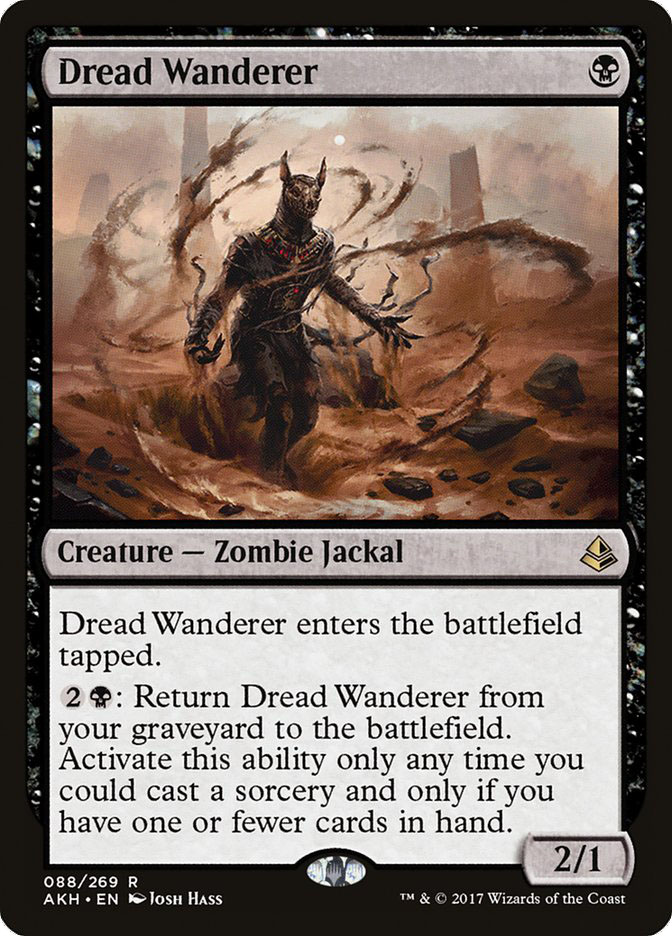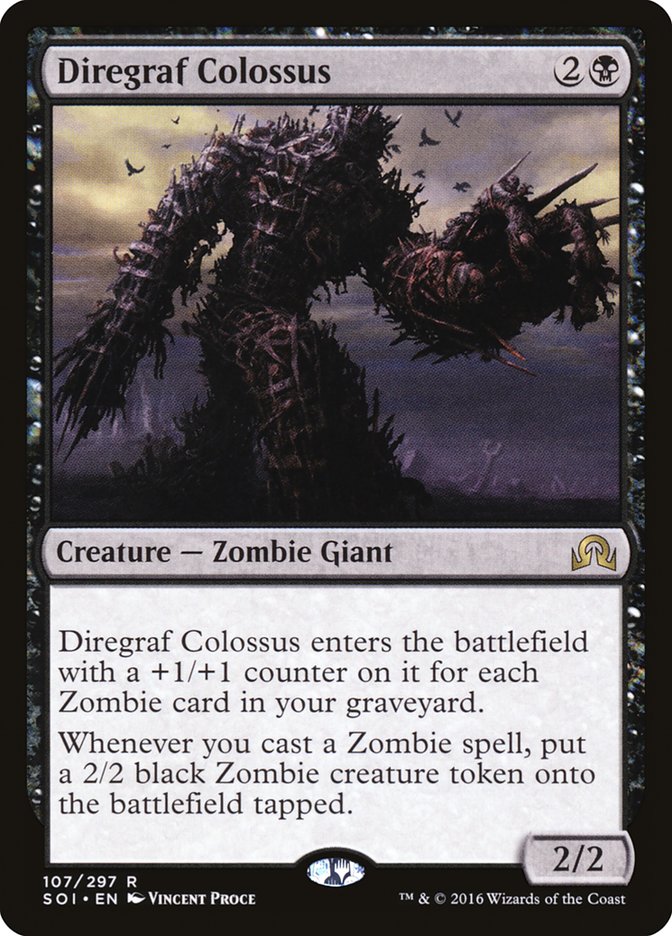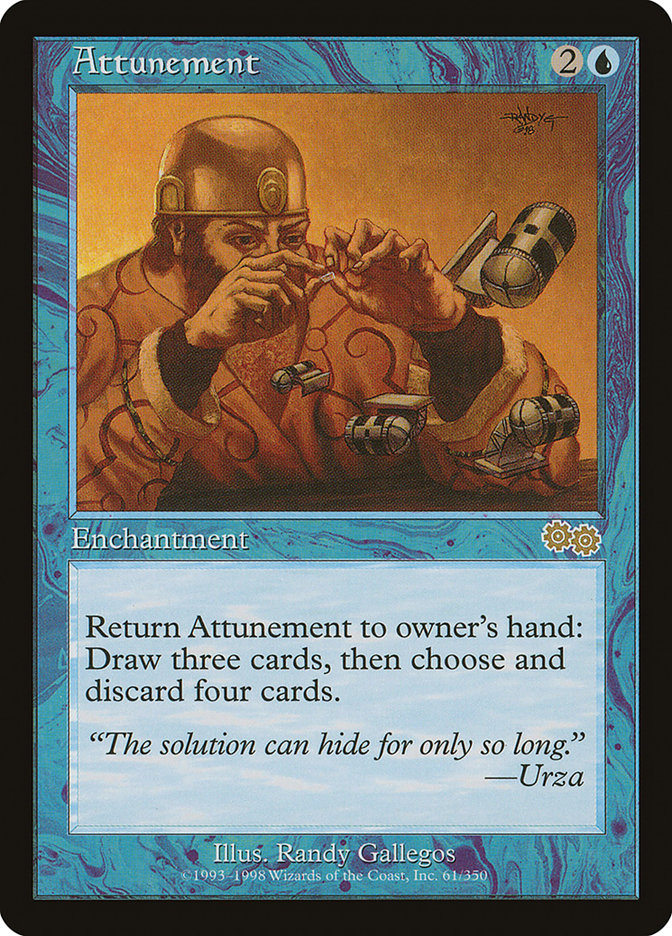To many, Washington D.C. is the heart of the United States of America.
To me, it was a beginning.
Millions look to Washington D.C. for hope of a brighter future. I found it
there. Seven years ago I traveled to the Capital City not knowing if I
could make it in this game. This weekend I will once again go, but this
time I’ll be there with no doubts.
Seven years ago I became a champion there, and this weekend I’ll be
returning as one.
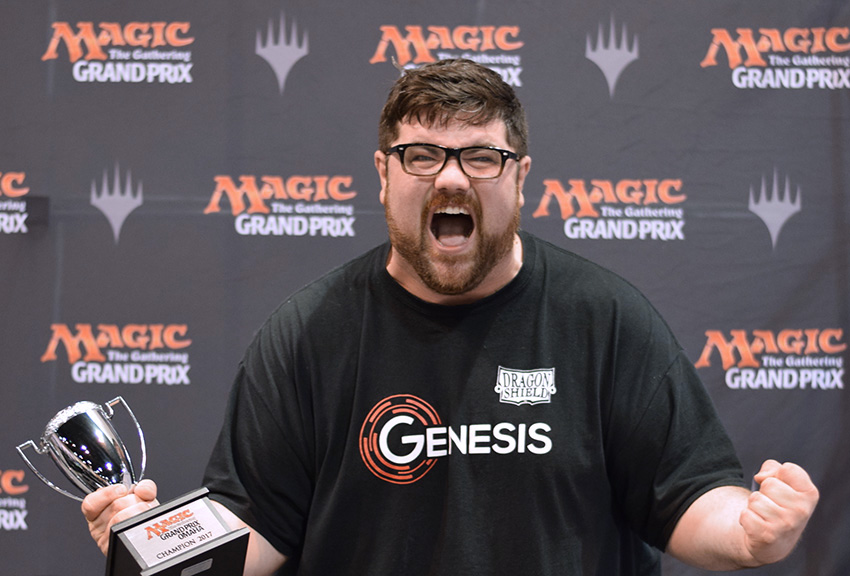
Wizards of the Coast
My history with this city isn’t the only thing on my mind going into the
weekend. This will be the last event for both Zendikar and Innistrad block when it comes to Standard. So many cards we’ve
played with so many times are about to say their goodbyes, but none will be
as bittersweet than the man, the mythic, the legendary everything: Gideon,
Ally of Zendikar.
This Battle for Zendikar mythic took over Standard at a level we
rarely see. Only until recently has the card stopped being dominant. It
seems Gideon, Ally of Zendikar couldn’t pull a “Mayweather” as his career
was cut short in these last fleeting months. Will someone be able to give
this card a proper sendoff in Washington? My best guess is no, but then
again it’s hard to count this card out. Maybe he’s got one last trick up
his sleeve.
Maybe he can leave on a horse, riding off into the sunset.
Creatures (21)
- 1 Kalitas, Traitor of Ghet
- 4 Thraben Inspector
- 4 Lone Rider
- 4 Glory-Bound Initiate
- 4 Crested Sunmare
- 4 Sunscourge Champion
Planeswalkers (4)
Lands (25)
Spells (10)
- 1 Declaration in Stone
- 1 Anguished Unmaking
- 2 Authority of the Consuls
- 4 Fatal Push
- 2 Aethersphere Harvester
Sideboard

Choosing a deck for the weekend can always be difficult, but that’s only
amplified when a format is coming to an end. The tension between “play what
you know” and “don’t get left out” can grind restlessly in one’s psyche.
Logic fights emotion as this will be the last time one will play the
format. Do you take that leap of faith, or do you risk going down with a
potentially sinking ship?
My career hinged on these decisions. I didn’t have a deck the night before
#GPDC
back in 2010. I was in between playing Conley Wood’s Esper Control deck
that I’d heard was good and had limited testing with; and Paulo Vitor’s
Mono Red deck I’d never played a game with. In the end I decided to go back
to what I knew the best: UW Control. I relied on play skill. That got me
all the way through the field of 1900 to my first big trophy.
Creatures (8)
Planeswalkers (7)
Lands (26)
Spells (19)

A week later was the opposite. I’d tested for the Pro Tour more than any
before it, but I just didn’t think my deck choice was good for me. I
decided to last-minute pick up a Mono Green Eldrazi Monument deck I’d yet
to play a game with. That decision put me in the top 8 of my very first Pro
Tour. Two weekends, two decisions, both made last minute.
Making last minute deck decisions has never been difficult for me. It may
sound cliche to use a movie trope as an analogy, but I’ve always bought
into the idea that immobility is a death sentence. Even looking at it
existentially, death isn’t waiting for us, so why should we wait for it?
This translates so fluidly to Magic; only random chance can stave
misfortune for stagnancy. Many understand this but feel they lack a deep
enough well of knowledge to execute it. Rather than venturing into the
unknown, they’d rather seek shelter in comfortability. For some this very
well may be the best decision for them; but for others it’s a mental crutch
that keeps them from discovering their full potential.
To appreciate the lessons I’ll be teaching today it’s important to not
assume I believe you’re playing the wrong deck, or that am being judgmental
in any way. There are no right or wrong deck choices. There
are merely correct and incorrect processes to finding out which decks are
right or wrong to play. After all, it’s impossible to solve a riddle
without understanding it first.
The process starts with the intake of information. This is by far the most
important part of the process as any mishaps can lead to misguided
conclusions down the road. Take in everything and choose what to discard as
irrelevant information later. Articles, decklists, coverage replays, and
even tweets can have a relevant impact on metagame outcomes. Collect the
data in anyway you deem optimal, then start sifting through it.
You are not to act as judge for what information is worthy of
implementation, but rather only try to anticipate what others will do with
it. Often these do go hand in hand, as a clearly bad idea won’t gain much
stock with the collective, but there’s a very low percentage chance you
share that opinion with everyone. Always understand this, as these
avoidable “oversights” can often feel like slights in the moment.
”
I can’t believe I lost to that deck, it’s so bad. It can never beat
Mono Red in a million years!”
Knowing how to process this information is similar to any scientific
method. You build a foundation of understanding, test things out, and often
find errors in your findings. Sometimes they are solvable, and other times
they are not. What separates the “play what you know”s, and the “don’t get
left out”s is whether or not they are willing to break apart their
foundation to start again. Any new developments should come with a
refurbishing of previous findings. This could be something small like a
sideboard plan, but it can also be as big as the inability to play a
certain deck.
It can be daunting to look at all your hard work and know you should
abandon it. It’s emotionally stimulating to make progress, making it that
much more difficult to find out it was misguided. In these situations it’s
vital to understand that an emotional bias will try to take hold. Whether
it’s a fear there’s not enough time, or an understatement of relevancy,
your brain will try to keep you from starting over.
A panic may set in, but you can’t buy into this paranoia. Work smart, then work hard. Before making any decision, you should
evaluate why you believe your current assessments are off and where in the
process you may have taken a wrong turn. You shouldn’t just throw away
everything you know or start blindly trying other decks and hoping one of
them sticks. You “start over” with the process but now with more
information in which to lay out your new foundation. That’s the disconnect
that causes so many players to become stationary in their process. Many
think of the truest form of starting over when they have to abandon their
work, but the truth of the matter is you’ve learned a great deal that can
still be used moving forward.
Back to Washington
Thus far this article’s been fairly dense with abstract theories, so I’d
like to break it up a little by showing you how my system works firsthand
in preparation for
#GPDC
. For it to come off as naturally as I want it to, I’m going to take some
liberties in presentation so you can see exactly how I compile my
information. It’s not as sophisticated as some may do it, but it’s what I
know.
Step One: Intake Information
Grand Prix Denver
- Temur Dominates
- Ramunap Red puts up good showing
- Jeskai God-Pharaoh’s Gift surprises the metagame
- Zombies and Winding Constrictor underperform
- U/W Monument sneaks into top 8
- Ramp continues to disappoint
Most of the articles pertaining to Standard discuss BBD, Corey, and my
dominance with Temur, and why the deck was a good choice. A few break down
Jeskai, with sideboard guides (sideboard guides naturally increase the
number of pilots). Ramunap Red is discussed as the deck that isn’t going
anywhere. There are rumblings of U/B Control and other metagame specific
decks that can attack both Temur Energy and Jeskai God-Pharaoh’s Gift.
Magic Online RPTQ
- Mardu 8-0’s
-
Temur dominates with both BBD’s list from
#GPDEN
and mine from his article. Very little deviation from those two
lists. - Zombies and B/G underperform again.
-
For the most part, Temur and Ramunap Red makeup a large portion of
the 6-2 or better metagame. -
U/R Control made top 8, but U/W Approach looks to be the more
heavily played control deck.
Cherry Picked 5-0’s
It’s important to stress that the daily five 5-0 lists are no longer
something you should use to gauge a metagame. Wizards now handpicks them,
and from everything I can gather their ambitions are to showcase variety
over all. So even though we see Ramunap Red and Temur Energy almost every
day, we also see random brews that they think are cool. This makes it
important to sift through this information for ideas that you or others may
use, but to never make judgment calls on metagame percentages from this.
-
G/R Pummeler Variants, and W/B Sunmare decks show up.
-
U/B Control popped up for a brief moment last week, but hasn’t been
seen much since. -
Zombies and B/G are rarely seen.
-
Temur and Ramunap Red show up frequently.
-
Shaheen Soorani promotes his new Grixis Control deck.
-
Boxing is rigged.
-
People really like to spoil
Game of Thrones for others.
The last batch of articles show to be lacking in any information that could
make me speculate on them impacting the decision-making process of the
field.
Step Two: Processing the Information
It doesn’t take a rocket scientist to assume Temur Energy and Ramunap Red
will be the two most played decks at
#GPDC
. It’s practically irrelevant which one is in higher numbers as it’s
probable you’ll have to be able to beat multiples of both to find yourself
in a position to win it all.
Creatures (26)
- 4 Falkenrath Gorger
- 3 Village Messenger
- 4 Bomat Courier
- 3 Kari Zev, Skyship Raider
- 4 Hazoret the Fervent
- 4 Ahn-Crop Crasher
- 4 Earthshaker Khenra
Lands (24)
Spells (10)

Creatures (24)
- 4 Longtusk Cub
- 4 Bristling Hydra
- 4 Whirler Virtuoso
- 4 Servant of the Conduit
- 4 Rogue Refiner
- 3 Glorybringer
- 1 Rhonas the Indomitable
Lands (22)
Spells (14)

So what does that tell us? Well, first of all control seems to be horribly
positioned if it must go against that gauntlet. Weeks prior they had both
Mono-Black Zombies and B/G Constrictor to prey on, but it seems like both
of those decks are simmering down recently. Without a plethora of good
matchups to lean on, it seems highly unlikely for controlling strategies to
either be overplayed or overperform.
So what about Ramunap Red and Temur Energy? Pilots of both of these decks
will also be considering how to beat them. Now, Ramunap Red is fairly rigid
by design so making large shifts to the deck isn’t that possible, but at
the same time there probably will be some considerations to hedging towards
Temur Energy.
Cards like Chandra, Torch of Defiance will assuredly be played in peak
numbers as it’s a great way to steal games against Temur Energy on the
play. The same can be said about Glroybringer as it’s one of the easier
ways to get around a Bristling Hydra. In the end, however, there isn’t much
Ramunap Red can do to make Temur Energy a great matchup. It will continue
to be close, and both sides need to accept that.
What could change this is how Temur Energy decides to evolve.
Given how good The Scarab God is against both Temur Energy and Jeskai, it’s
not out of the question that a high percentage of Temur Energy pilots move
toward the four-color variant.
It’s been very rare in the past for the majority of pilots of a deck to
transition over to a variant that adds a color, so I doubt everyone will do
it. My best guess is that 25% of Temur Energy players will be splashing for
The Scarab God and Dispossess. Especially since adding a fourth color
simply hurts the Ramunap matchup ever so slightly.
Brains
Why did Mono-Black Zombies fall off the map? Is it not being played as
heavily, or just doing badly? If just performing badly, why? Before I
answer these questions, it’s good to think about with Constrictor’s poor
performances as well. I believe B/G Constrictor to be decent against
Ramunap Red, but a weaker choice than Temur Energy when facing off against
Mono-Black Zombies or Temur Energy. On top of that Temur Energy has a
better chance to beat controlling and ramp strategies. It can be concluded
that B/G Constrictor is simply a worse version of Temur Energy at this
point.
To test out what the deal is lately with Zombies, I joined some leagues
with this:
Creatures (20)
Lands (25)
Spells (15)

After completing two leagues, I finished with these results:
Mono-Red 3-0
Jeskai Approach 1-0
Temur 1-1
Zombies 2-0
Jeskai God-Pharaoh’s Gift 1-0
B/G Constrictor 1-0
Now this isn’t my first run with Mono-Black Zombies. I’ve actually tested
it a lot over the months, and never felt like it was that great of a
choice. I assumed my findings with this session would be much of the same.
Of course, ten matches is a small sample size, but the results did reflect
how the deck felt during the games. The deck was smooth, and I didn’t run
into as much hate as I thought I would. That could be due to the
aforementioned small sample size, but it could also have something to do
with the deck not having as large of a target on its back right now. Is
Zombies the deck to take home the final trophy? Is this format that
beautifully cyclical?
That’s really how Magic metagaming works. A deck that was targeted into
oblivion one week may become a good choice at the very next tournament.
There are clear factors into when this will happen: time between events, if
new decks distract people, or even if new tech can be found for the
targeted strategy. Since there really isn’t anything new in the list, it’s
only really plausible that if Mono-Black Zombies would become good again it
would be due to other distractions. When new decks start popping up, it is
common for players to take out a card or two dedicated to a now lesser
threat to make room for new additions. Mono-Black Zombies does fit that
criteria as a deck that people would start to remove cards for.
Before I jump head first into this rabbit hole, it should be considered
that my results aren’t indicative of the deck’s abilities, but more
reflective to how well I can play the game. I always say that Magic Online
isn’t a great tool to prove if my decks are good, but only can be used to
find out if they are bad. Just because I won with Mono-Black Zombies in
this small sample size doesn’t mean the deck’s great. It just
means that there’s a chance the deck’s poor results over the past few
weekends is not due to the deck’s inability to perform in this metagame.
So now I want to dig deeper. What specifically would make Mono-Black
Zombies a good deck choice? I for sure need to increase my sample size, as
assuming ten matches is enough would be foolish. My next question is if the
deck can find a configuration to catch Temur Energy off guard after
sideboarding. I have my ideas, but there are far too many of them to figure
it out only using theory. I’ll have to wait until I can get someone I trust
to sit on the Temur Energy side of things. Then I can start scratching
things off the list. Sadly, both my brother and Brian Braun-Duin are both
moving into new places so they are unavailable until after this article is
due to be sent off for editing. Thus ends today’s example since this is
exactly where I’m at in the process.
If I find something, then I may be close to finding my deck choice. If I
can’t, it’s back to the drawing board, but with new information that
Mono-Black Zombies shouldn’t be ignored going into the event. I can still
“sacrifice” my B/G Constrictor matchup since I’ve already tested that deck
post
-#GPMINN
, but I cannot do the same for Mono-Black Zombies anymore.
Now it would have been easy to just dismiss Mono-Black Zombies as both an
option and a threat by looking at the data. I could “assume” it was bad,
and not worth worrying too much about. I mean, there is just so much
information to process that it may feel easier to just make bold claims
initially and never challenge them. It would at the very least expedite the
process so I wouldn’t have to invest as much time into the preparation
process for the Grand Prix. If I did this, my foundation would have likely
been flawed, and thus the results tainted. I would, like many others, skim
on my Mono-Black Zombies matchup, and potentially pay the ultimate price by
losing to it.
This is How Deep You Need to Go
Questions create more questions, and the process may never feel done, but
this example shows you how looking deeper can end up benefiting you in the
long run. Now I can’t be certain that anything I’ve said today should be
considered “fact” going into
#GPDC
as I’m not one to ever feel confident about my deck choices, but that’s
because I do this to myself all the time. I go through this process over
and over again. You might think it’s foolish of me to doubt myself so much,
but I believe people don’t doubt themselves enough when it comes to deck
selection. That should tell you something.
My process doesn’t leave much room for confidence, but it does at least
make me prepared for most things going into an event. If I worked hard
enough, and thought long enough, I’m ready for anything, because I’ve
thought of everything.
I really don’t know what you should take away from this article. I don’t
know if there’s brilliance in here or it’s just the same process everyone
goes through. All I do know is that people often have questions about my
process, and it was high time I tried to put it down on paper. As
convoluted, messy, and misguided it may seem, it sure as has helped me put
up some good results.
If this is complete rubbish, thanks for reading it anyway. If, for some
reason, I do think about the game in a unique way that others don’t, please
don’t expect this process to just work for you immediately. It’s as human
as I am. Riddled with flaws and mistakes. It grows with me, and each week I
learn something new about it. It’s not a cheat sheet intended for you to
start getting better grades, but a way of thinking that may open you up to
learning how to think differently. Think smarter about things. Always
challenge yourself to be better than you were last week. Don’t give in to
laziness. Absorb as much information as you can before making judgment
calls. Always be willing to be wrong, but never too scared to trust your
gut.
Never stop learning.



